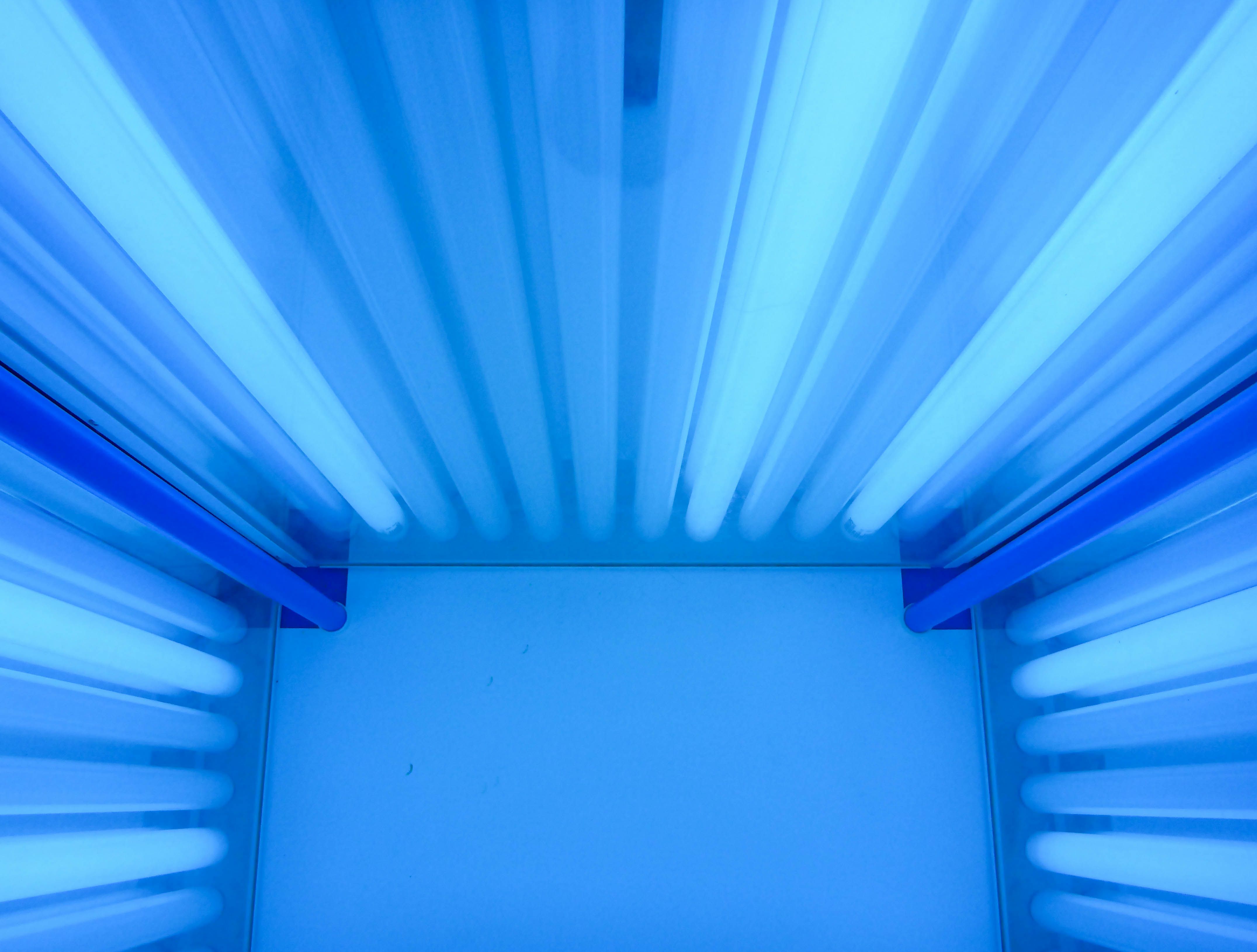- Center on Health Equity & Access
- Clinical
- Health Care Cost
- Health Care Delivery
- Insurance
- Policy
- Technology
- Value-Based Care
Ultraviolet Phototherapy Without Psoralens Does Not Increase Risk of Skin Cancer, Study Suggests
A retrospective cohort study found no significant associations between phototherapy without psoralens and the risk of skin cancer.
Patients undergoing phototherapy without psoralens are not at an increased risk of keratinocyte cancer and melanoma, according to a study recently published in Journal of the American Academy of Dermatology.
Ultraviolet Phototherapy Model | image credit: IIIRusya - stock.adobe.com

Phototherapy, such as ultraviolet light therapy, is a common treatment for patients with different skin conditions such as eczema and psoriasis. This treatment approach comes with risks, however, due to the significant association between ultraviolet radiation and the development of skin cancer. Skin cancer risk can be further heightened with these therapies due to the addition of psoralen, which aids in sensitizing an individual’s skin to light. The authors of the present study note how the dangers of systemic treatment with psoralen plus ultraviolet-A (PUVA) in these patients is well documented. Yet, there is a lack of knowledge regarding skin cancer risks in ultraviolet phototherapy without psoralens.
Past studies on photocarcinogenic risks, the authors mention, have encountered numerous obstacles such as small cohorts, lack of comparison groups, insufficient accounting for different skin cancer developments, addressing cofounders, and more. To address these limitations and derive more coherent, conclusive evidence on photocarcinogenic associations, researchers thoroughly investigated these skin cancer risks in a large study assessing patients between 1977-2018.
Patients treated at the Vancouver General Hospital phototherapy center in Canada were retrospectively analyzed. This cohort included those treated with Broadband Ultraviolet-B (BB-UVB, 280-320 nm), combined ultraviolet-A and -B (UVAB, 280-400 nm), and Narrowband Ultraviolet-B (NB-UVB, 311-313 nm) therapy. Those who received whole-body PUVA were not assessed. Tumor-based and patient-based incidence rates of skin cancer were tracked, as were administration of immunosuppressive medications, type and location of skin cancer, and other patient demographics.
A total of 3506 patients were included in the analysis; 2.3% of patients (n = 82) had experienced a past skin malignancy, 26.4% (n = 925) had eczema, and 60.9% (n = 2136) had psoriasis. On average, patients underwent exposure to BB-UVB, UVAB, and NB-UVB in aggregates of 35 (range 1-3328), 25 (1-881), and 43 (1-881), respectfully. The median cumulative doses for BB-UVB and NB-UVB was 3.6 J/cm2 and 18.9 J/cm2. As for UVAB combination treatment, the cumulative dosing for UVA and UVB were 101.5 J/cm2 and 1.3 J/cm2. Of the 3506 patients, 28.5% (n = 998) underwent over 100 sessions.
Follow-up was an average of 5.9 years across the cohort. Analysis found 170 tumors throughout 79 patients (120 basal cell carcinomas [BCC], 33 squamous cell carcinomas [SCC], and 17 melanomas). Age-standardized incidence rates (ASIR) for patient-based and tumor-based skin cancers were 149 (95% CI:112-187)/100,000 person-years and 264 (219-309)/100,000 person-years, respectively. Researchers did not find any significant links between the tumor-based ASIR and the general population. Furthermore, no significant associations were made between patients with immunosuppressant medication history (n = 530) or patients with psoriasis or eczema in phototherapy. The relationship between skin cancer and UVB therapy also did not produce a significant correlation, nor did analyses factoring in the number of sessions patients underwent.
As their results did not indicate any significant links between skin cancer risk or incidence in phototherapy with NB-UVB, UVAB, or BB-UVB, the authors conclude that ultraviolet phototherapy without psoralens should be considered a safe treatment approach.
Reference
Wang E, Ahad T, Liu YA, et al. Incidence and profile of skin cancers in patients following ultraviolet phototherapy without psoralens: A retrospective cohort study. J Am Acad Dermatol. Published online December 7, 2023. doi:10.1016/j.jaad.2023.11.053
